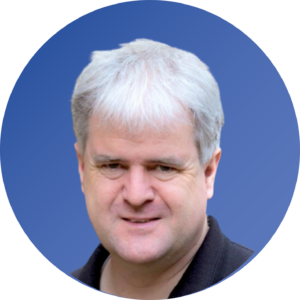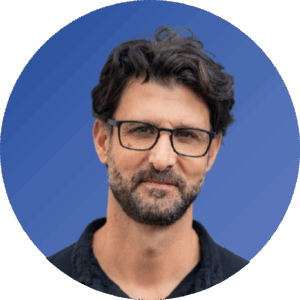IEEE World Haptics Conference 2025
Plenary Talks
We are pleased to announce the renowned and influential plenary speaker line-up for IEEE WHC 2025. The following visionary speakers will share their experiences and insights on the latest trends and developments in the field of haptics.

Dr. Sangok SEOK
(Chief Executive Officer of NAVER LABS, Korea)
Title New Connections: Spatial AI, Digital Twin, Cloud, and Robotics for Future Cities

Prof. Mark Billinghurst
(University of South Australia, Australia)
Title TBA

Dr. Anatole Lecuyer
(Inria Rennes/IRISA, France)
TitleWelcome to my haptic illusion factory: pseudo-haptics, persuasive haptics, haptic motion, and more!

Prof. Aude Billard
(EPFL, Switzerland)
Title oward Human-Like Dexterity for Robots and Beyond

Dr. Sangok SEOK
(Chief Executive Officer of NAVER LABS, Korea)
Title: New Connections: Spatial AI, Digital Twin, Cloud, and Robotics for Future Cities
Dr. Sangok Seok, CEO of NAVER LABS, is leading NAVER’s next-generation technology platform research through the integration of robotics, AI, autonomous driving, digital twin, etc. Holding a bachelor’s and master’s degree in Mechanical and Aerospace Engineering from Seoul National University and a doctorate in Mechanical Engineering from the Massachusetts Institute of Technology, his research paper on the MIT Cheetah was selected as the best paper at IEEE/ASME in 2016. After working in National Instruments and Samsung Electronics, Dr. Seok joined NAVER in 2015, spearheading NAVER’s robotics field and filing over 60 robot-related patents. Since becoming the CEO of both NAVER LABS (in 2019) and NAVER LABS Europe (in 2020), he has been leading world-class researchers to prepare for the future of NAVER with advanced technologies that connect people, machines, space, and information. In 2022, Dr. Seok received much attention from international corporations · media · research institutions for the “1784 Project,” under which NAVER’s second headquarters was constructed as the world’s first robot-friendly building. With recognition for the first domestic installation of local 5G networks, he was awarded the Bronze Tower Order of Industrial Service Merit. In 2023, Dr. Seok was appointed as vice chair of the Business Executive Council at the National Academy of Engineering of Korea, and in 2024, he has been awarded the Academic Award, Technology Sector from the Korea Robotics Society(KROS) in recognition of the innovative robot platform’s contribution to the global robot service industry.

Dr. Sangok SEOK
(Chief Executive Officer of NAVER LABS, Korea)
Title: New Connections: Spatial AI, Digital Twin, Cloud, and Robotics for Future Cities
NAVER LABS’ spatial intelligence technology is at the forefront of innovation, creating new connections between the physical and digital worlds. We’d like to explain how we are expanding into innovative services such as robotics, autonomous driving, AR/VR, and smart cities. Then, we’d like to share our vision and the future we can create together

Dr. Anatole Lecuyer
(Inria Rennes/IRISA, France)
Title: Welcome to my haptic illusion factory: pseudo-haptics, persuasive haptics, haptic motion, and more!
Anatole Lécuyer is senior researcher at Inria, the French National Institute for Research in Computer Science and Control, in Rennes, France. His research interests include haptics, virtual reality, 3D user interfaces, and brain-computer interfaces. He served notably as secretary of the IEEE Technical Committee on Haptics (2006-2011), program chair of the IEEE Virtual Reality conference (2015 and 2016), and general chair of the IEEE Virtual Reality Conference (2025). He was associate editor of several journals including IEEE Transactions on Visualization and Computer Graphics, ACM Transactions on Applied Perception, and Presence. He is the author or co-author of more than 250 scientific publications and 15 patents. Anatole Lécuyer obtained the Inria-French Academy of Sciences Young Researcher Prize in 2013, the IEEE VGTC Technical Achievement Award in Virtual/Augmented Reality in 2019 and was inducted in the inaugural class of the IEEE Virtual Reality Academy in 2022.

Dr. Anatole Lecuyer
(Inria Rennes/IRISA, France)
Title: Welcome to my haptic illusion factory: pseudo-haptics, persuasive haptics, haptic motion, and more!
In this talk I will reflect on more than 25 years of haptics research, much of it devoted to the design of interactive systems that push the boundaries of haptic perception. I will start with my personal motivations, which can be traced back to a childhood fascination with interactive technologies, in particular the first virtual reality systems and haptic interfaces of the 1990s. Another source of inspiration was human perception and its flaws, such as haptic illusions, which pave the way for perceptual magic tricks to fool the human brain. I will then present my main results in this area, starting with pseudo-haptic feedback, a technique introduced in the early 2000s that allows haptic sensations to be modified or generated using visual feedback. I will also present more recent results such as “persuasive haptics”, which can artificially enhance social interactions and verbal communication, or “haptic motion”, an alternative haptic paradigm capable of inducing powerful self- motion illusions using haptic feedback. In short, this talk is an exotic journey into the simulation of alternative haptic perceptions and the design of disruptive technological devices: welcome to my haptic illusion factory!

Prof. Aude Billard
(EPFL, Switzerland)
Title: Toward Human-Like Dexterity for Robots and Beyond
Aude Billard is full professor, head of the LASA laboratory and the Associate Dean for Education in School at the School of Engineering at the Swiss Institute of Technology Lausanne (EPFL). Prof Billard currently serves as the President of the IEEE Robotics and Automation Society, director of the ELLIS Robot Learning Program and co-director of the Robot Learning Foundation, a non-profit corporation that serves as the governing body behind the Conference on Robot Learning (CoRL), and leads the Innovation Booster Robotics, a program funding technology transfer in robotics and powered by the Swiss Innovation Agency, Innosuisse. Prof Billard holds a BSc and MSc in Physics from EPFL and a PhD in Artificial Intelligence from the University of Edinburgh. Prof Billard is an IEEE Fellow and the recipient of numerous recognitions, among which the Intel Corporation Teaching award, the Swiss National Science Foundation career award, the Outstanding Young Person in Science and Innovation from the Swiss Chamber of Commerce, the IEEE RAS Distinguished Award, and the IEEE- RAS Best Reviewer Award. Dr. Billard was a plenary speaker at major robotics, AI and Control conferences (ICRA, AAAI, CoRL, HRI, CASE, ICDL, ECML, L4DC, IFAC Symposium, ROMAN, Humanoids and many others) and acted on various positions on the organization committee of numerous International Conferences in Robotics. Her research spans the fields of machine learning and robotics with a particular emphasis on fast and reactive control and on safe human-robot interaction. This research received numerous best conference paper awards, as well as the prestigious King-Sun Fu Memorial Award for the best IEEE Transaction in Robotics paper, and is regularly featured in premier venues (BBC, IEEE Spectrum, Wired).

Prof. Aude Billard
(EPFL, Switzerland)
Title: Toward Human-Like Dexterity for Robots and Beyond
This talk will present small steps we made to encompass robot hands with some of human dexterity, from the ability to hold objects in multiple ways, as well as hold multiple objects in hand, to the ability to manipulate objects in hand, predicting changes in mass distribution, adapting to unexpected disturbances, to moving objects across pairs of fingers. This work leverages on careful combination of machine learning to encapsulate models of uncertainty and control methods for stability. Yet, human dexterity still eludes largely robotics. This talk will conclude by discussing the way forward, illustrating this through key results from a study of human acquisition of fine manipulation skills in watchmaking, and in microsurgery. It will conclude by showing a new robot hand design that displays a dexterity beyond human’s for some tasks.